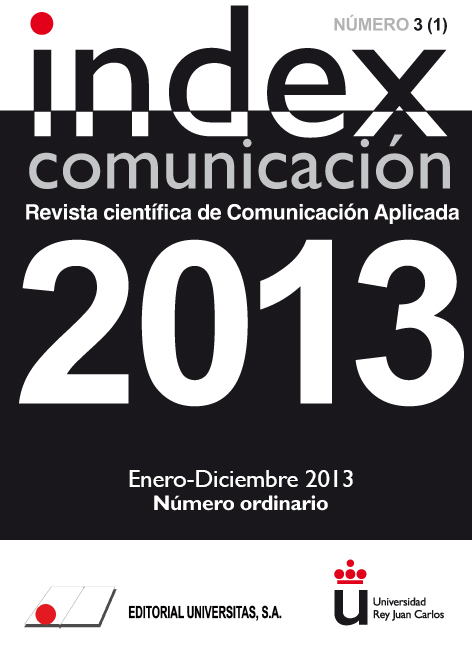'A Photographic Scramble through Spain': An image of Spain in Charles Clifford’s book
Keywords:
periodismo, comunicación, lengua, fotografía, viajes, Charles Clifford,Abstract
The British photographer, Charles Clifford (1819-1863) is best known as one of the pioneers of commercial photography in Spain. However, until now, little has been said about the role of his book, A Photographic Scramble through Spain as a complement to his photographs. This study will show how Clifford not only used the book as a commercial instrument but also as a means to convey the image of Spain that he wished to show to his potential buyers and readers in the United Kingdom.
Metrics
References
Alonso Martínez, F. (2002): Daguerrotipistas, calotipistas y su imagen de la España del siglo xix. Girona: CCG Ediciones.
Álvarez Millán, C. y Heide C. (2008): Pascual de Gayangos. A Nineteenth Century Spanish Arabist. Ediburgh: Edinburgh University Press.
Álvarez Millán, C. (2009): ‘Gayangos y Arce, Pascual de. (Sevilla, 21.VI.1809 – Londres (Reino Unido) 4.X.1897. Arabista, historiador, Bibliófilo y bibliógrafo’. Madrid: Diccionario Biográfico Nacional (Real Academia de la Historia) Vol. xxii.
Álvarez Ramos, M. A. y Álvarez Millán, C. (2007): Los viajes literarios de Pascual de Gayangos (1850 – 1857) y el origen de la archivística española moderna. Madrid: CSIC. Estudios Árabes e Islámicos Monografías.
Bahamonde, A. y Martínez, J. A. (1998): Historia de España siglo xix. Madrid: Cátedra.
Bullough Ainscough, R. (2012): “Charles Clifford en la exposición de la Photographic Society de Londres en 1854”. Espacio, Tiempo y Forma, Serie vii, Hª del Arte, t. 25.
Butler, D. J. (2001): A Historical Account of the British Cemetery, Madrid: 3rd Edition.
Clifford C. (1861): A Photographic Scramble through Spain. London: Marion & Co.
Dimond, F. y Taylor, R. (1987): Crown & Camera. Middlesex: Penguin books.
Fontanella, L. (1999): Clifford en España. Un Fotógrafo en la Corte de Isabel ii. Madrid: El Viso.
Fontanella, L. (1996): Charles Clifford fotógrafo de la España de Isabel ii. Madrid: El Viso.
Ford, R. (1855): A Handbook for Travellers in Spain. London: John Murray. Third Edition.
García Melero, J. E. (1998): Arte Español de la Ilustración y del Siglo xix. En torno a la imagen del pasado. Madrid: Encuentro Ediciones.
Gautier, T. (1843): Voyage en Espagne. Viaje por España. Madrid: Editorial Mediterraneo. Traducción de 1944.
Kurtz, G. (1996): ‘Charles Clifford aeronauta y fotógrafo. Madrid: 1850-1852’ en Fontanella, L. (1996): Charles Clifford fotógrafo de la España de Isabel ii. Madrid: El Viso.
Paredes, J. (coord) (2004): Historia contemporánea de España, siglo xix. Madrid: Ariel.
Piñar Samos, J. (2012): ‘El Pasado como motivo. La Alhambra en la producción fotográfica europea (1840-1888)’. Granada: Cuadernos de la Alhambra, Cuaderno 44b.
Piñar Samos, J. y Sánchez Gómez, C. (2004): ‘Clifford y los álbumes de la Academia’. Boletín de la Real Academia de Bellas Artes de San Fernando, Números 98 y 99 (primer y segundo semestre).
Robertson, I. (2004): Richard Ford, 1796 – 1858. Hispanophile, Connoisseur and Critic. Norwich: Michael Russell
Sougez, M. L. (2006): Historia de la fotografía. Madrid: Cuadernos Arte Cátedra, décima edición.
Tuñón de Lara, M.; Tortella Casares, G.; Martí, C. et al. (1993): ‘Revolución Burguesa, Oligarquía y Constitucionalismo (1834-1923)’, en Historia de España.Vol. viii. Barcelona: Editorial Labor.
Downloads
Published
How to Cite
Issue
Section
License
Authors who submit to this journal agree to the following terms:
Authors retain copyright and ensure the magazine's right to be the first publication of the work as licensed under a Creative Commons Attribution-NoComercial 4.0 International License that allows others to share the work with an acknowledgment of authorship of the work and the initial publication in this magazine, with no commercial purpose.
Authors can establish separate additional agreements for non-exclusive distribution of the version of the work published in the magazine (for example, to an institutional repository or publish it in a book), with an acknowledgment of its initial publication in this journal.
It allows and authors are encouraged to disseminate their work electronically (eg, in institutional repositories or on their own website) prior to and during the submission process, as it can lead to productive exchanges, as well as a citation more early and most of the published work (See The Effect of Open Access).















